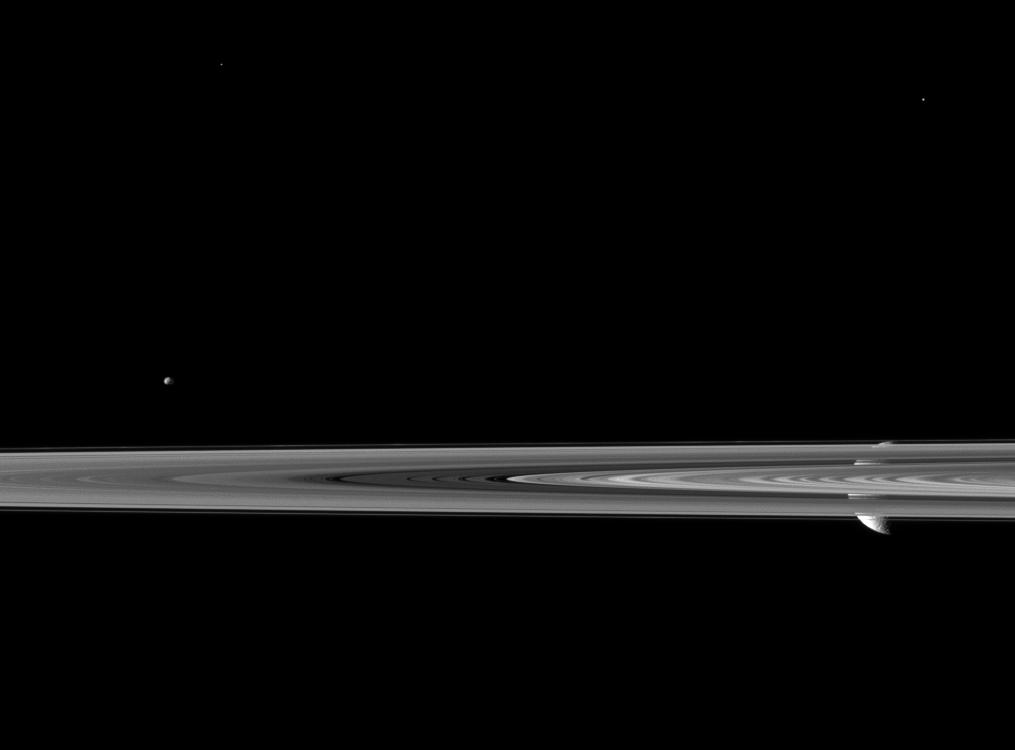Peekaboo Rhea

| PIA Number | PIA12618 |
|---|---|
| Language |
|
Saturn's second largest moon Rhea pops in and out of view behind the planet's rings in this image from the Cassini spacecraft, which includes the smaller moon Epimetheus.
Rhea (1,528 kilometers, or 949 miles across) is on the right of the image, behind the rings as seen by Cassini. Epimetheus (113 kilometers, or 70 miles across) is on the left of the image and is also beyond the rings. Telesto (25 kilometers, or 16 miles across) is visible in the top right and has been brightened by a factor 1.5 relative to Rhea and the rings. The bright speck in the top left of the image is a star.
This view looks toward the northern, sunlit side of the rings from just above the ringplane. Lit terrain seen on Rhea is on leading hemisphere of that moon.
The image was taken in visible light with the Cassini spacecraft narrow-angle camera on March 8, 2010. The view was obtained at a distance of approximately 2.3 million kilometers (1.4 million miles) from Epimetheus and 2.7 million kilometers (1.7 million miles) from Rhea. Image scale is 14 kilometers (9 miles) per pixel on Epimetheus and 16 kilometers (10 miles) per pixel on Rhea.
The Cassini-Huygens mission is a cooperative project of NASA, the European Space Agency and the Italian Space Agency. The Jet Propulsion Laboratory, a division of the California Institute of Technology in Pasadena, manages the mission for NASA's Science Mission Directorate, Washington, D.C. The Cassini orbiter and its two onboard cameras were designed, developed and assembled at JPL. The imaging operations center is based at the Space Science Institute in Boulder, Colo.
For more information about the Cassini-Huygens mission visit http://saturn.jpl.nasa.gov . The Cassini imaging team homepage is at http://ciclops.org .
Credit: NASA/JPL/Space Science Institute
